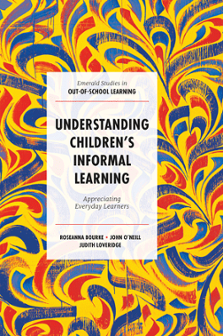
Index
Understanding Children's Informal Learning: Appreciating Everyday Learners
ISBN: 978-1-80117-275-2, eISBN: 978-1-80117-274-5
Publication date: 19 February 2024
Citation
Bourke, R., O'Neill, J. and Loveridge, J. (2024), "Index", Understanding Children's Informal Learning: Appreciating Everyday Learners (Emerald Studies in Out-of-School Learning), Emerald Publishing Limited, Leeds, pp. 171-175. https://doi.org/10.1108/978-1-80117-274-520241010
Publisher
:Emerald Publishing Limited
Copyright © 2024 Roseanna Bourke, John O'Neill and Judith Loveridge
INDEX
(see also Intergenerational learning)
(see also Informal learning)
- Prelims
- Chapter 1: Introduction
- Chapter 2: The Richness of Children's Lives
- Chapter 3: Revealing Children's Informal and Everyday Learning
- Chapter 4: Conceptions and Dimensions of Children's Informal Learning
- Chapter 5: Intergenerational Learning
- Chapter 6: Changing Understandings of Informal Learning
- Chapter 7: Teachers Learning About Children's Learning
- Chapter 8: Expansive Conceptions of Informal and Everyday Learning
- Chapter 9: Conclusion
- Glossary
- Index